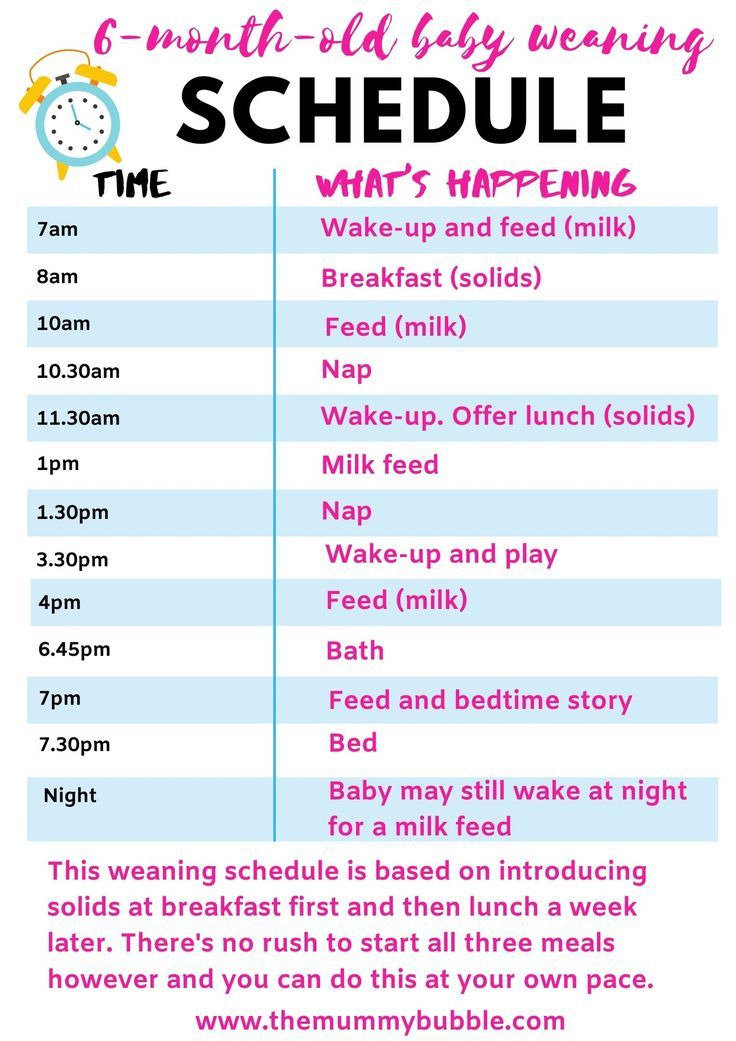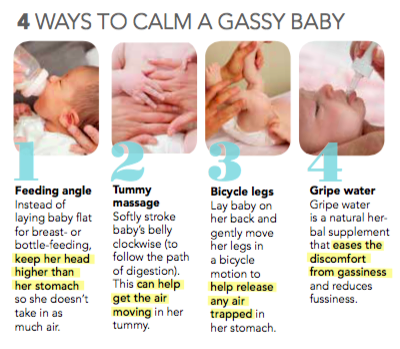Sample baby food schedule 6 months
Example 6 Month Old Feeding Schedule
As you make the transition to introducing solid foods around six months, life starts to change!
The thought of introducing new foods on top of breast milk or formula and naps can leave even the calmest of new parents apprehensive.
Here are some things to keep in mind as you start to introduce those first foods to your baby, and a sample schedule to help you wrap your head around what to do!
More: For more help with baby led weaning and how to help your baby succeed with eating, be sure to check out this article with a comprehensive guide to baby led weaning and first baby foods!
6 month old baby’s feeding schedule pointers
Before we get to the actual schedule, here are a few things to keep in mind.
When to Start Solid Foods With Baby
The American Academy of Pediatrics recommends starting solid foods around 6 months. In this case solid food means traditional baby food or baby led weaning style finger foods. Really, anything other than breast milk or infant formula!
The best way to tell if your baby is ready to start solid foods is by following their developmental signs of readiness.
Once they are ready for foods, grab a good high chair, take a look at the schedule below, and you can start them with some modified table foods or a baby cereal and pureed foods.
Learn How to Set The Best Foundation For Feeding Your Baby!
Learning what to feed your baby is helpful. But what about all the rest?! Things like how they should be positioned for eating, what you should say at meals, and how to set up an environment that fosters a positive feeding relationship-for life!
These are the things your parents and friends don't have the answers for, and they're the things that make the biggest difference!
Grab the Foundations course where I walk you through it all.
Breast Milk or Formula Is Still Their Primary Source of Nutrition
A 6 month old baby’s main source of nutrition is still going to be breast milk or formula. Introducing food is to help them get used to it, form a positive association with food, and to start getting some additional nutrients that they start to need right around that 6-month mark.
But your baby’s needs don’t all of a sudden change to where they need an additional three meals a day and a ton of food and eating opportunities!
The idea is to start slowly and follow your baby’s cues as you introduce more food and eating opportunities.
Keep giving breast milk or formula as you were before. That can mean on demand if you’re breastfeeding, or following the same general schedule you were before for formula-fed babies and breastfed babies.
Their amount of formula or breastmilk won’t necessarily change. The average baby at this time is usually going to be nursing 5-6 times a day, or taking 24-32 ounces of formula. In many cases, it might actually increase because they are having growth spurts and will start to need more!
In many cases, it might actually increase because they are having growth spurts and will start to need more!
After you give them their breast milk or formula, add in a meal 30-60 minutes later. This doesn’t need to be set in stone, as what works for your baby might differ from someone else’s!
The general idea is to offer breast milk or formula first, give them a bit of a break, and then offer them solid foods.
Your 6 Month Old Baby Won’t Eat That Much!
At the beginning, babies take time to learn how to eat. Most babies will need to get the handle of how to get food to their mouth and down their throat. They won’t really be eating solid meals for several weeks in most cases.
Don’t panic if you’re a few weeks in and they still aren’t getting much solid food down. Give it some time. Remember, their primary source of nutrition is still their breast milk or formula!
And if you aren’t sure what to expect when it comes to solid foods, make sure to grab the Starting Solids course to help prepare you and give you confidence in feeding and to help you set up a great foundation for your feeding relationship with them.
Sample Feeding Schedule For A 6-Month-Old Baby
The biggest thing to keep in mind is that every baby is going to be different. I generally shy away from giving out specific schedules, because different things work for different babies.
But after many parents have asked consistently for it, here is an example schedule for your 6 month old to help you with a place to start for your daily routines.
I’m giving specific times to help you visualize it, but think of this more as a spacing example for your day than an exact example of when you should be doing these things.
A Note On Your Baby’s Sleep Schedule
All babies will have different sleep schedules. This is especially true for the first year of your baby’s life. Some babies will have a short nap in the morning, while others will take a long nap.
Sometimes that happens no matter how hard you try to maximize the hours of sleep your baby gets!
The best thing you can do is to be consistent in your wake windows. Meaning if your baby gets up at 7 am, you want to be consistent with something like a 2 hour wake window. This means that they will go back down for their first nap 2 hours after waking up.
Meaning if your baby gets up at 7 am, you want to be consistent with something like a 2 hour wake window. This means that they will go back down for their first nap 2 hours after waking up.
Follow this same pattern for their later naps and plan to put them down based on when they woke up, not necessarily the time the clock says.
As the day goes on, their wake window might get slightly longer. And as they grow, they will generally start to take longer naps and lengthen their wake time between naps.
Sample 6 Month Old Feeding Schedule With Breakfast
Here is an example of how I might space my day if I was planning to feed my baby solid foods at breakfast time. When they are first starting to eat and for the first several weeks of solid foods, they really do only need one meal a day.
Daily Schedule With Breakfast
- 6:30 am: Wake-up, then nurse or bottle
- 7:30-8:00 am: Breakfast (Head to this article for specific help with what to serve your baby at meals.
 )
) - 8:30 am: First morning nap
- 10:30 am: Nurse or bottle
- 12:00 pm: Second nap
- 1:30 pm: Nurse or bottle
- 4:00 pm: Third nap
- 5:00 pm: Nurse or bottle
- 6:30 pm: Nurse or bottle, then bedtime routine and sleep
Sample Feeding Schedule With Dinner
Here is a sample feeding schedule with dinner as your meal for the day. Again, this is just an example. To serve a different meal, simply aim to have the food 30-60 minutes after you have given them breast milk or formula.
You do not need to serve food at the same meal every day, or exactly at the same time. If your baby sleeps through your normal lunch time when you were planning to feed them, just plan to feed them at dinner.
I do recommend aiming to get in at least one meal a day once you start giving them solid foods to help them get in the practice that they need.
Daily Schedule With Dinner
- 6:30 am: Wake-up, then nurse or bottle
- 8:30 am: First morning nap
- 10:30 am: Nurse or bottle
- 12:00 pm: Second nap
- 1:30 pm: Nurse or bottle
- 4:00 pm: Third nap
- 5:00 pm: Nurse or bottle
- 5:30 pm: Dinner (Here are some dinner ideas for babies)
- 6:30 pm: Nurse or bottle, then bedtime routine and sleep
These Schedules Are Just Starting Places!
This is just a final reminder for you that these really are just places for you to start. Every baby and family will find a different flow that works for them.
Being consistent in wake windows is the most important thing at this age. Sleeping really is primary!
Sleeping really is primary!
A tired baby isn’t going to want to sit at the table and focus on learning how to eat. So do your best to let sleeping and breast milk or formula be the main concerns, and add in meals in between those.
As your baby gets older, the feeding schedule for 7 month olds really doesn’t change much.
They might drop a nap, have longer wake windows, and will likely start wanting to have more meals.
To increase meals to 2 a day, simply keep the same things in mind and add a meal 30-60 minutes after breast milk or formula when they are awake.
Looking for help on a feeding schedule for your toddler or 1-year-old? Check out this article with a sample 1 year old feeding schedule!
5- and 6-month-old feeding schedules
- Community
- Getting Pregnant
- Pregnancy
- Baby names
- Baby
- Toddler
- Child
- Health
- Family
- Courses
- Registry Builder
- Baby Products
Advertisement
Feeding your 5- to 6-month-old baby is about to get a lot more exciting! In addition to nursing or taking bottles throughout the day, they're probably getting ready to try their first solid foods. Babies this age still get most of their nutrition from breast milk or formula, and will have four or five nursing sessions or 24 to 32 ounces of formula each day. When they're showing signs of readiness, like sitting up when supported, you can introduce your baby to solids.
Babies this age still get most of their nutrition from breast milk or formula, and will have four or five nursing sessions or 24 to 32 ounces of formula each day. When they're showing signs of readiness, like sitting up when supported, you can introduce your baby to solids.
Photo credit: Thinkstock
Your baby is going through a lot of changes at 5 and 6 months old, and a steady, consistent routine will help them thrive. But you'll also need flexibility as your baby grows. Big milestones for babies this age include (possibly) learning how to sleep through the night, sitting up, and starting solid foods.
It can be a big help to see how other parents navigate their babies' schedules. Below, you'll find sample feeding schedules based on those of real parents and reviewed by a pediatrician on our Medical Advisory Board.
Most babies are ready to start solid foods when they're around 6 months old. Signs of readiness include:
- Being able to sit upright, usually with some support
- Having good head and neck control
- Showing an interest in food (i.
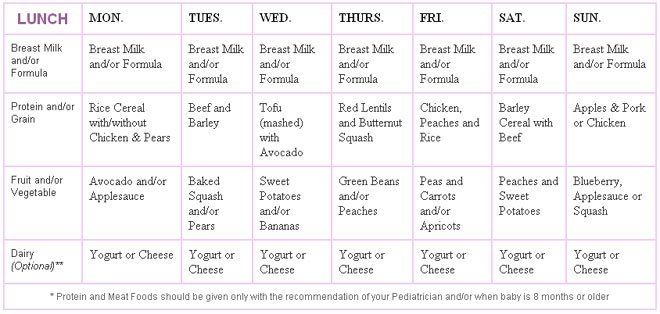 e., they reach for your plate of food while you're eating and open their mouth when offered food)
e., they reach for your plate of food while you're eating and open their mouth when offered food)
Even after you start solid foods, though, most of your baby's nutrition will still come from breast milk or formula. At 5 and 6 months, most babies need 24 to 32 ounces of formula in a 24-hour period.
They'll drink about 6 ounces at every feeding, so that'll come out to five or six bottles per day, or a bottle every three to four hours (except at night – babies this age typically can go through the night without a feeding).
Breastfed babies will continue to nurse five or six times a day, though that may vary. You likely already have a regular routine and know when your baby is hungry, but your baby's patterns change as they grow, so keep an eye on their hunger cues. And, get specific tips on how to tell whether your baby is getting enough breast milk or formula.
Sample 5-month-old feeding schedule
6 a.m.: Nurse for 10 to 20 minutes.
7 a.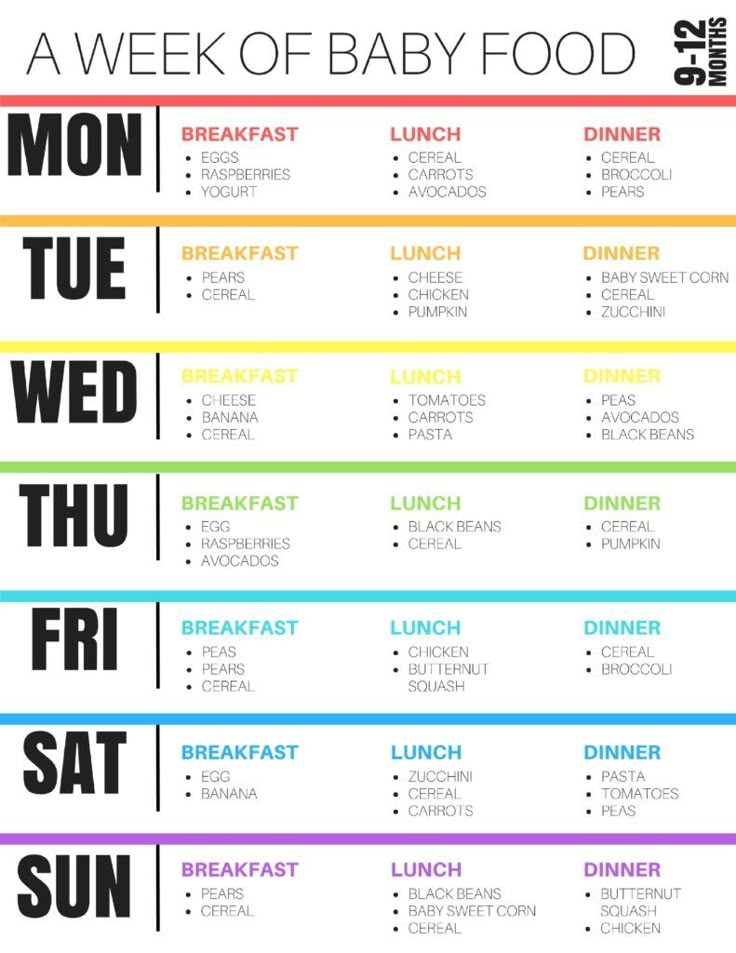 m.: Playtime.
m.: Playtime.
Advertisement | page continues below
8 a.m.: Naptime.
10 a.m.: Breakfast – 1 tablespoon of stage one fruit and 2 tablespoons of baby cereal with 1 ounce of breast milk, then nurse for five to 10 minutes.
10:30 a.m.: Playtime.
12 p.m.: Naptime.
2 p.m.: Nurse for 10 to 20 minutes.
2:30 p.m.: Playtime.
4 p.m.: Short nap.
4:30 p.m.: Nurse for 10 to 20 minutes, then playtime.
6:30 p.m.: Playtime.
7:30 p.m.: Bedtime routine and nurse for 10 to 20 minutes.
Sample 6-month-old feeding schedule
9 a.m.: 6-ounce bottle of formula.
10 a.m.: Playtime.
11 a.m.: Naptime.
12 p.m.: Lunch – a 5-ounce jar of fruit or veggies and a 4-ounce bottle of formula – then playtime.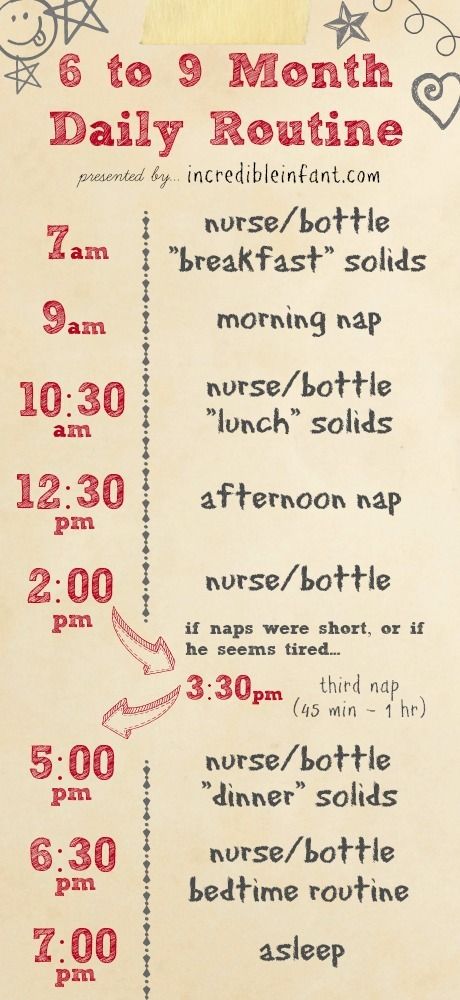
2 p.m.: Naptime.
3 p.m.: 6-ounce bottle of formula, then playtime.
4 p.m.: Naptime.
5:30 p.m.: 6-ounce bottle, then playtime or a walk.
7 p.m.: Bedtime routine and a 6- or 8-ounce bottle.
Tips for feeding 5- and 6-month-olds
Here are some tips for feeding your 5- and 6-month-old baby:
- Don't worry if your baby isn't very interested in solid foods or only eats a little at a time. At the very start of their solid food journey, your little one will only eat 1 or 2 tablespoons of food at a time. (If you're not sure how much you're supposed to be feeding your baby at this point, check out our visual guide to baby food portions.)
- Even once your baby starts solids, keep breastfeeding or offering a bottle as usual, since most of your baby's nutrition will come from breast milk of formula until they're a year old.
- If you're worried about your breast milk supply, try breastfeeding or pumping more often to kick milk production into gear.
 Read more tips on increasing your milk supply.
Read more tips on increasing your milk supply. - Consider night weaning your baby if you haven't yet. By 5 or 6 months old, they most likely can make it through the night without a feeding. If they're still waking up at night, it could be out of habit rather than because they're hungry. Sleep training can help teach them to sleep longer at night.
- If your baby is breastfed, be sure to introduce solid foods that are rich in iron or fortified with iron (like baby cereal or pureed meat) to prevent anemia. Breast milk doesn't provide much iron, and at around 6 months old, the iron in your baby's body is running low and they need other sources of this essential mineral.
- Experts recommend introducing first foods one at a time with 3 to five days between new foods. This can help you pinpoint negative reactions or allergies to a specific food.
- Some families choose baby-led weaning, a method for introducing solid foods that allows babies to feed themselves. This usually means starting off with finger foods, rather than purees.
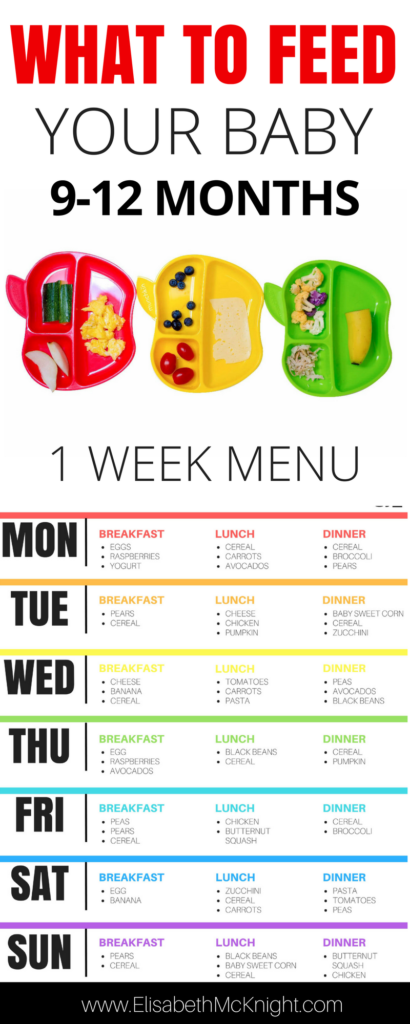
- Store-bought baby food is a good choice for babies, but homemade baby food can be a great, budget-friendly option, too. Here are some tips and recipes for making homemade baby food.
Here are some good first foods for babies:
- Baby cereal (opt for whole-grain cereals rather than rice cereal)
- Pureed squash
- Applesauce
- Pureed avocado
- Mashed bananas
- Pureed prunes, to help if your baby is constipated
Learn more:
- Your 5-month-old baby's growth and development
- Your 6-month-old baby's growth and development
- What to do if your baby won't eat solid food
Mary Sauer
Mary Sauer is a freelance parenting and health writer living in Kansas City. She is a mom of four and loves to hike with her kids, read, and knit. Cooking a complicated meal her kids probably won't eat is one of her favorite pastimes.
diet for a 6-month-old baby with breast and artificial feeding, an approximate menu for a week in the table, a diet for a day
Published: 02/10/2021
Reading time: 4 min.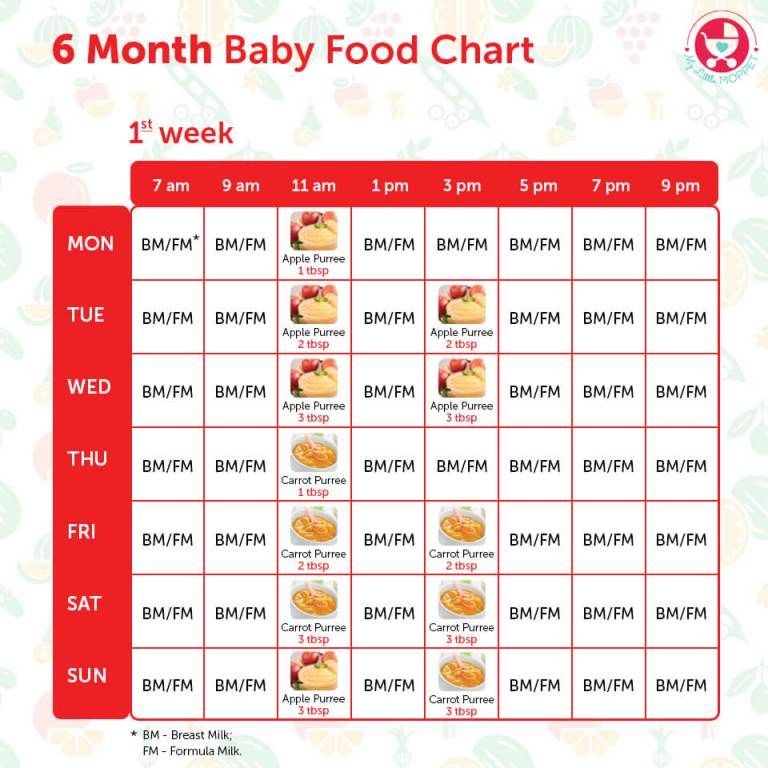
Number of reads: 192884
Author of the article: Ponomareva Yulia Vladimirovna
Pediatrician, candidate of medical sciences, allergist-immunologist
Changes in a child in the first year of life are very rapid, and each month is not like another. The 6-month milestone is very important, it is largely evaluative and transitional. By this age, most babies have doubled their birth weight, are about 15 cm tall, and some babies have already erupted their teeth. The age of 6 months is also transitional in terms of nutrition. Breast milk or an adapted formula is still the basis of the diet, but with the beginning of the second half of life, all children, without exception, should begin to receive complementary foods. Despite the general graph of growth and weight gain and indicators of psychomotor development, the status and diet of children at 6 months can be very different.
Content: Hide
- The first feeding of 6 months
- The start of complementary foods at 4-5 months
- The second half of the life
- for a week for a child at 6 months
The first feeding of
If the baby is healthy and breastfed, and his mother eats a full and varied diet, exclusive breastfeeding is possible until this age. Cereal complementary foods in this case are preferable to start. This is due to the high energy and nutritional value of cereals, the ability to significantly enrich the baby's diet with a delayed start of the introduction of complementary foods.
Cereal complementary foods in this case are preferable to start. This is due to the high energy and nutritional value of cereals, the ability to significantly enrich the baby's diet with a delayed start of the introduction of complementary foods.
However, the rate of expansion of the child's diet in this situation will be accelerated. Before the 8th month of life, it is necessary to introduce all basic food groups into the baby’s menu, since in the second half of the year the need for additional intake of nutrients and micronutrients is very high. Another reason explaining the importance of the rapid introduction of complementary foods is the formation of immunity of the immune cells of the intestine to ordinary food. If a child is introduced to these foods at the age of 4-8 months, the risk of developing food allergies has been proven to be reduced.
Complementary feeding starts at 4-5 months
In today's life, the nutrition of a nursing mother, unfortunately, is not always complete. Therefore, for most breastfed babies, complementary foods already need to be introduced from 5 months in order to prevent deficient conditions.
Therefore, for most breastfed babies, complementary foods already need to be introduced from 5 months in order to prevent deficient conditions.
If a child is bottle-fed, then by the 4th month of life, the baby will not have enough adapted formula alone, and in this group of children, the timing of the introduction of complementary foods usually shifts a month earlier than in breast-fed babies. Accordingly, by 6 months, children will have vegetable puree and gluten-free porridge (buckwheat, corn and rice) in their diet. In the first half of life, monocomponent meals are used (that is, from one type of grain and vegetables), prepared on the basis of water, breast milk or an adapted mixture.
Fruit puree and juice can be another possible complementary food for children under 6 months of age without allergy symptoms. In a child with a risk of developing or manifesting allergies, the timing of the introduction of fruit complementary foods is shifted to the 8th month.
Second six months of life
Children over 6 months of age can supplement their diet with cereals containing gluten. First of all, these are oatmeal and wheat porridge, and then multi-cereal dishes with the addition of other cereals (millet, barley, rye). If the child does not have any manifestations of allergies, milk porridge can be included in the menu at this age. Bebi Premium industrial baby food products include specially prepared milk that is safe to use in healthy babies in the first year of life.
First of all, these are oatmeal and wheat porridge, and then multi-cereal dishes with the addition of other cereals (millet, barley, rye). If the child does not have any manifestations of allergies, milk porridge can be included in the menu at this age. Bebi Premium industrial baby food products include specially prepared milk that is safe to use in healthy babies in the first year of life.
From the age of 6 months, the baby's diet is expanded with such important products as meat and cottage cheese. These products are a source of high-quality protein, fats, and are also rich in minerals such as iron, calcium, and phosphorus. Pediatricians and nutritionists recommend introducing meat and cottage cheese as part of combined dishes based on a fruit and vegetable and / or grain component in a ratio of 1 (cottage cheese / meat): 4–5 (fruits / vegetables / cereals).
To enrich the diet with polyunsaturated fatty acids in the second half of the year, the menu includes vegetable oil in the amount of 3–5 grams per day, which can be added to the complementary food dish.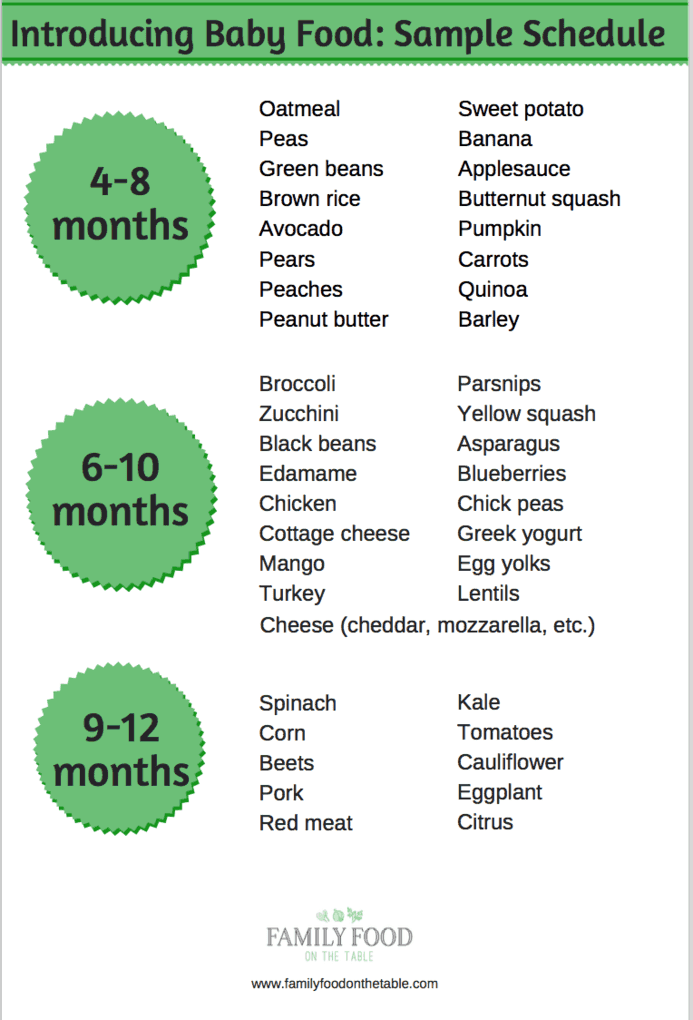 The volume of each feeding is approximately 150-170 ml, and the child can already stand up to 3.5 hours between meals.
The volume of each feeding is approximately 150-170 ml, and the child can already stand up to 3.5 hours between meals.
In the table below, we offer a menu of 6 months for a week for a child who started receiving complementary foods at the age of 4-5 months, and by the time the second half of life begins, dairy-free gluten-free cereals, vegetable and fruit purees have already been introduced into his diet.
1st day
| Seeing | 0065 50|||
| Lunch (12.30) | vegetable soup with beef, olive oil | 100/30/3 | compot of drocked 9006, 9006 9 |
| Afternoon snack (16.00) | Plum puree with cottage cheese | 60/40 | |
| Breast milk/formula | 60 062 | ||
| food reception | menu | ml/g | |
| Early morning | breast milk/mixture | 150 | Milki | & Bashas Breakfast (09 cherry Bebi Premium» | 100 |
| 0065 Breast milk/mixture | 150 | ||
| children's soluble cookies "BEBIKI" Classic | |||
| GRUSHERS with rice and Claus | GRUSHIOUS WITH RISE and CRETURE 30 | ||
| Bebi Premium Kids Instant Herbal Tea | 50 | ||
| Bedtime 065 Breast milk/formula | 150 | ||
Rate the article
(Number of votes: 20, average 4. 8)
8)
Share with friends:
Child's daily routine, nutrition, development at 6 months
04/19/2019
31
Approximate daily routine of a child
6 months
The daily routine of a 6 month old child is becoming more and more stable:
- A schedule is formed with predictable periods of daytime sleep.
Some babies are comfortable with two naps during the day, others sleep three times a day until 8-9 months.
It is worth paying attention to the duration of daytime sleep - morning and afternoon sleep should be at least 1-1.5 hours long so that the child's body has a good rest. The third dream may remain short, it is better to start it between 15.00-16.00. Make sure that it does not end too late, otherwise the time for evening bedtime will shift. Morning and afternoon naps are recommended to be done at home, the third nap can be spent outside in a stroller.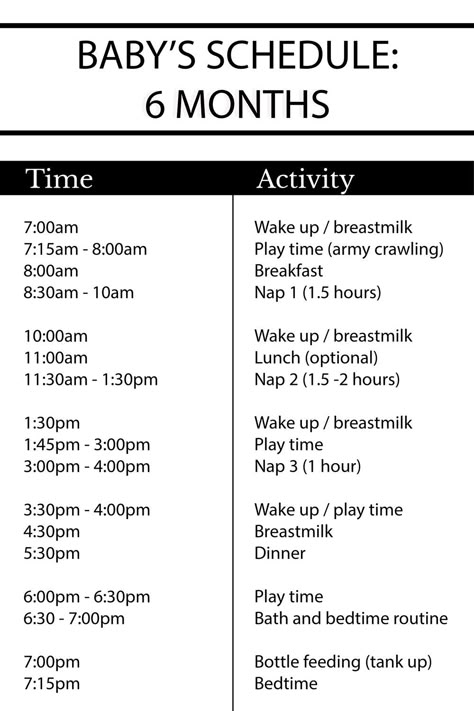
When going to bed early, the best time to wake up in the morning is 06.30-07.00.
- Regular bedtime appears
A six-month-old baby is already physiologically ready for early bedtime. The optimal time for leaving at night will be between 18.00-20.00. You will have a clear bedtime ritual that will help the child relax and make the process of bedtime easier. The ritual must be repeated daily. It takes 20-30 minutes to complete it.
- The period of wakefulness of the child increases
Now, when forming the daily routine, one should focus primarily on the recommended waking time - in six months it increases to 2.5 hours with an established regimen with three daytime sleeps. Signs of fatigue in a child are already harder to notice, so you can miss the moment when the baby is ready for bed.
Total amount of sleep
Now the child needs to sleep 13-14 hours a day. Night sleep is 11-12 hours with awakenings for 2-3 feedings while breastfeeding. The number of night awakenings in formula-fed babies will be less. The total duration of daytime sleep at this age is about 2.5-4 hours.
Night sleep is 11-12 hours with awakenings for 2-3 feedings while breastfeeding. The number of night awakenings in formula-fed babies will be less. The total duration of daytime sleep at this age is about 2.5-4 hours.
Monitor your baby and follow the main recommendations of the table to understand how many hours of sleep he needs and build the right daily routine that will suit your six-month-old baby.
A table on the sleep and wakefulness of a child at 6 months will help you with this:
You can adjust the regime and adapt it as your baby grows in the Club MODE FROM A TO Z - read more.
What affects baby's sleep:
1. By 6 months, your baby has already learned to roll over from back to stomach and back. Now he is gradually mastering new skills: he learns to pull himself up at the support, get on all fours, sit on his own and actively prepare for crawling. The baby can continue to practice new skills both during the day and in the crib during sleep. At such moments, he often wakes up and sleeps restlessly. This is part of the natural development of the child.
At such moments, he often wakes up and sleeps restlessly. This is part of the natural development of the child.
To help him get used to the new possibilities of his body, practice new skills while you are awake. Show how you can lie back down from a sitting position. And if before the child did not mind spending a lot of time in the stroller, now he needs time and space for active play during wakefulness. After 7-14 days, the child’s sleep will improve.
2. Skipping naps and going to bed too late at this age can lead to overtiredness, protests before bed and frequent nighttime awakenings. To prevent this from happening, try to follow a clear daily routine.
3. At six months, the baby may show the first signs of separation anxiety. Having become more independent, he realizes that he is not one with her. And the baby develops fear and anxiety that the mother will leave and will not return. If you find your baby won't let go of you during bedtime, extend the ritual to include carrying, massages, hugs, and kisses.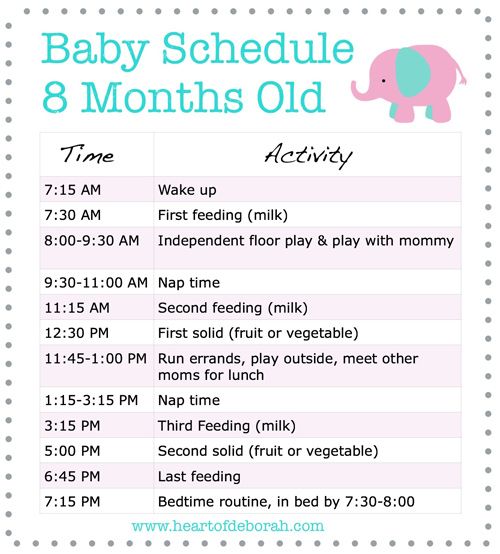 Offer your child a sleep toy that smells like you and "guards" their sleep. It is also worth spending more time with the child one on one, without being distracted by other things.
Offer your child a sleep toy that smells like you and "guards" their sleep. It is also worth spending more time with the child one on one, without being distracted by other things.
4. Teething is another factor that affects the sleep of children of this age. In the acute period, help the baby in every possible way, use teething toys and anesthetic gel as recommended by your pediatrician. As soon as the acute period passes, return to the previous sleep conditions and daily routine.
Watch the free workshop MY BABY SLEEPING BADLY AT NIGHT: 3 SOLUTIONS if your child is having trouble sleeping at night.
Child's diet
6 months
Breast milk and infant formula are still the baby's main complete food, from which he receives important nutrients.
But at 5-6 months you will notice that he has begun to show interest in adult food - watching you eat, following the spoon with his eyes, opening his mouth and smacking his lips. At six months, it is important to maintain this food interest in him, gradually expanding the child's nutrition. For this purpose, complementary foods are introduced. It is from the age of six months that WHO recommends including adult food in the diet of a breastfed child.
At six months, it is important to maintain this food interest in him, gradually expanding the child's nutrition. For this purpose, complementary foods are introduced. It is from the age of six months that WHO recommends including adult food in the diet of a breastfed child.
Complementary foods can be started with vegetable puree. Choose zucchini, cauliflower, broccoli. Then gluten-free cereals are introduced. If the child is not gaining weight, then complementary foods usually begin with cereals.
Water is also added to the diet from 6 months. But modern pediatricians do not recommend giving juices to a child in the first year of life.
The volume of complementary foods is small - in the first days, half a teaspoon of puree is enough for a baby, then the serving volume gradually increases over 10 days to the required norm. Feed one food and see how your baby reacts. The best feeding time is the first half of the day.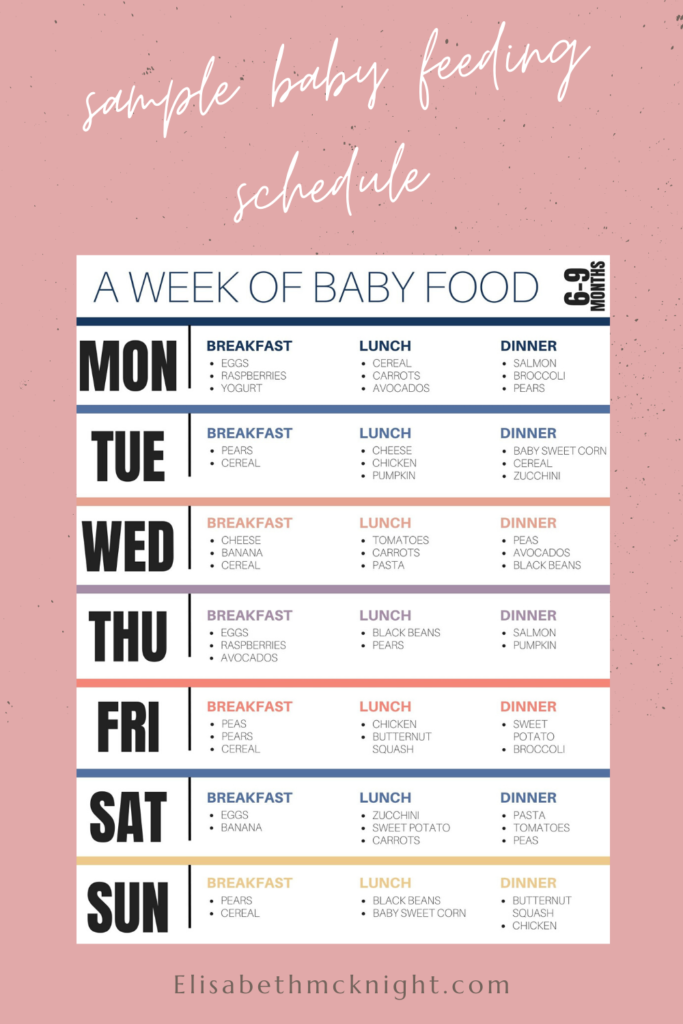
By the age of 6 months, the feeding regimen is formed. The child eats on awakening and shortly before bedtime up to 5-6 times a day. Attachments to the breast are short, as the child is often distracted during feeding. The most frequent feedings are in the evening and active sucking is shifted to the last 2-3 hours before waking up.
The amount and frequency of feedings should be discussed with the pediatrician.
Development of the child
Thinking
The baby now distinguishes well between friends and strangers and can show his displeasure, being left without a mother.
Be prepared that the child will not want to let you go if you want to leave him with his grandparents.⠀
Communication
The kid is already turning around at his name, listening to the voice of an adult and pronouncing syllables in response to your voice.